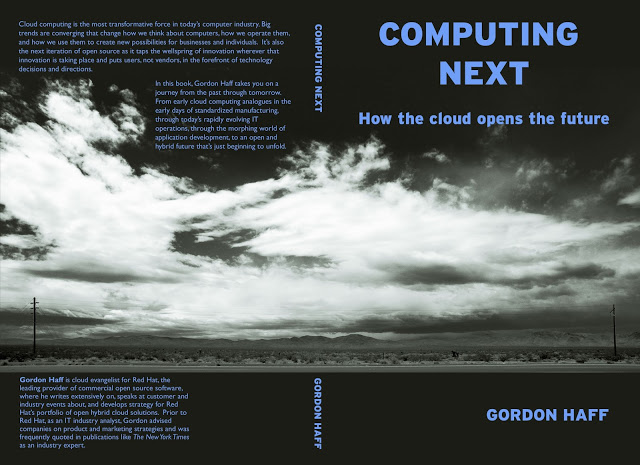

This book hit the streets in 2013 and combines a historical perspective of cloud computing with a look forward. While many of the discussions and context in this book remain valid, it arrived right before modern software containers came onto the scene. As a result, it misses the whole container ecosystem that's so important to computing in 2018. Containers are a central part of my newer book, From Pots and Vats to Programs and Apps.
Open source changed computing and all that it touches (which is to say just about everything). It redefined the economics of IT and gave control over their software back to users. But the effects went far beyond the source code. Ultimately, open source made possible a style of community-led development that hadn’t really been possible previously. It effectively turned what had been a top-down vendor-led approach to designing and delivering product into one that springs from ideas coming from everywhere. Open source development can look messy compared to integrated proprietary products, but time and time again, the choice, flexibility, and innovation stemming from open source have won out.
Furthermore, open source has helped stimulate the creation of the truly open and extensible standards, protocols, and APIs which make the modern interconnected computing world possible. The Internet as we know it would not be possible without open source, and neither would cloud computing. It isn’t that the cloud wouldn’t have developed as quickly or that it would cost more or not become as functional: it’s that cloud computing simply would not exist without open source. The majority of leading public cloud providers rely on open source, and that reliance on open source is permeating many other cloud computing-related projects and products as well.
But cloud isn’t just another software development project done the open source way. It extends the idea of sharing code to sharing compute resources, networks, and storage. It recognizes that IT isn’t just about the enterprise datacenter—or just about a particular public cloud provider. It taps the wellspring of innovation wherever that innovation is taking place rather than depending on one company’s engineering team. It puts users, not vendors, in the forefront of technology decisions and directions. It enables new approaches to developing, delivering, and integrating applications and data across distributed environments.
This book provides historical perspective, technical depth, and user insight. It brings together the thoughts of industry luminaries, it provides a context for how cloud computing fits with important industry trends including big data, mobility, and open source. Drawing on his years of experience with helping clients navigate the technology landscape, author Gordon Haff places cloud computing within a framework that consider's both computing's past—and its future.
Download the free PDF of Computing Next: How the cloud opens the future